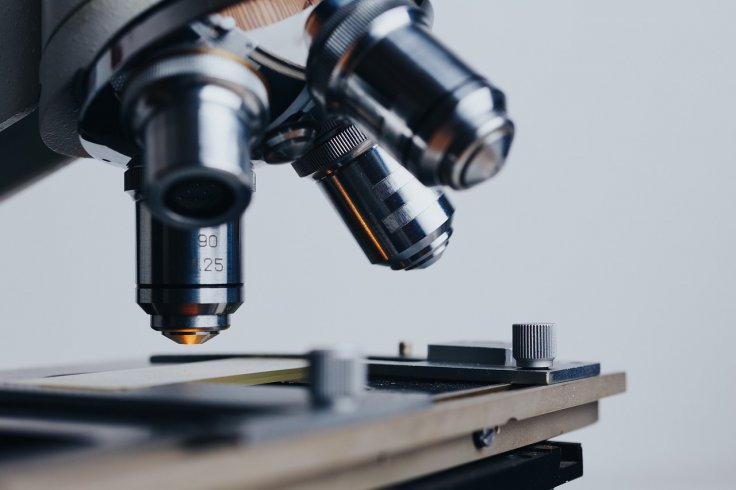
Alterations in the dermal extracellular matrix are the primary cause of skin aging. In particular, a reduction in the amount of collagen I, the fragmentation of collagen fibrils, and the buildup of amorphous elastin material, often known as elastosis, are all factors that contribute to skin aging. Matrikines and peptides that behave like matrikines have been suggested to induce growth factor-like actions, but their much smaller molecular size may possibly allow them to penetrate skin more effectively. This article summarizes the available research that includes growth factors, cytokines, and matrikines.
Introduction
Skin aging is a normal process caused by natural changes and environmental damage [i],[ii]. The dermis, largely formed of a thick, collagen-rich extracellular matrix (ECM) that confers structure and support for the skin cells and lends tensile strength and firmness to the skin, is where most change occurs. Elastic fibers are important secondary components of the dermis that give elasticity, resilience, and additional tensile strength. They comprise a cross-linked elastin core inside microfibrils based on fibrillin [iii]. Other significant changes occur in the epidermis, the most notable of which is the buildup of corneocytes, resulting in the skin appearing rough and lifeless [i],[iv]. In addition, changes in the vasculature of the skin and the structure of the subcutaneous tissue also contribute to aging.
Aging is related to thickening collagen fibrils and reorganizing total collagen content within the dermal extracellular matrix (ECM). This is primarily caused by a reduction in collagen production and an increase in fibril fragmentation [i],[ii],[v]. In addition, aging of the skin is related to increasing levels of matrix metalloproteinases, which may break down collagen and elastin fibers, in conjunction with reduced transforming growth factor (TGF)- signaling, which may inhibit collagen deposition [i],[ii],[vi].
Matrixyl Peptide Research and Investigations
Studies suggest the proteolytic hydrolysis of collagen may result in the formation of the matrikine known as Matrixyl [iv], [vi]. In vitro, investigations have suggested that exposure to this peptide may stimulate the synthesis of extracellular matrix and the expression of fibronectin and collagen types I and III. Additionally, research suggests it may stabilize the mRNAs that upregulate TGF-, which may increase the creation of collagen [viii]. It has been suggested that a palmitoylated and more stable version of Matrixyl (pal-MATRIXYL), also known as Matrixyl or palmitoyl pentapeptide-3, may permeate the stratum corneum [ix] and promote collagen I production by fibroblasts. The expression of type I collagen and hyaluronic acid synthase-1 by fibroblasts was suggested to be greatly upregulated by Pal-Matrixyl, and it was also speculated that Pal-Matrixyl may increase procollagen secretion. [vii]
In a randomized, split-face, double-blind, placebo-controlled research with 94 subjects who exhibiting facial wrinkles, the efficacy of an oil-in-water moisturizer that included Pal-Matrixyl was evaluated. The study participants had facial wrinkles [x]. Computer algorithms were used to analyze digital photos to determine the total length of wrinkles and fine lines. Additionally, skin texture, fine lines and wrinkles and lines, age spots, dark circles under the eyes, and skin elasticity were evaluated by specialists who were blindfolded, and the results were ranked on a scale that ranged from -4 (far worse) to +4 (much better).
A mixed model was used to examine the differences in adjusted treatment means, and a p-value of less than 0.10 indicated a significant difference between the groups. Fine line/wrinkle length was considerably shorter with the pal-Matrixyl cream than with a placebo cream after application twice daily for eight and twelve weeks, and clinically evaluated fine lines and wrinkles were much better with the pal-Matrixyl cream at weeks eight and twelve. In addition, the pal-Matrixyl cream dramatically improved skin roughness at weeks 4 and 8 and age spots and dark spots at weeks 12. Findings suggested that only the skin roughness at 4 weeks and age spots at 12 weeks appeared substantially improved after applying a more common criterion of p 0.05 to signify statistical significance. The transepidermal water loss measurement identified no variations in the skin's texture or barrier function. Therefore, even though the in vitro studies imply that Matrixyl and Pal-Matrixyl may boost collagen synthesis, there is still very little data to support this claim in clinical practice.
Buy Matrixyl here if you are a researcher interested in further studying this peptide. Remember that none of the above substances have been approved for human consumption; therefore, they may only be used by licensed professionals, scientists, and academics in confined laboratory settings.
References
[i] Baumann L. Skin ageing and its treatment. J Pathol. 2007;211(2):241–251. [PubMed] [Google Scholar]
[ii] Quan T, Fisher GJ. Role of age-associated alterations of the dermal extracellular matrix microenvironment in human skin aging: a mini-review. Gerontology. 2015;61(5):427–434. [PMC free article] [PubMed] [Google Scholar]
[iii] Sherratt MJ. Tissue elasticity and the ageing elastic fibre. Age (Dordr) 2009;31(4):305–325. [PMC free article] [PubMed] [Google Scholar]
[iv] Rittie L, Fisher GJ. Natural and sun-induced aging of human skin. Cold Spring Harb Perspect Med. 2015;5(1):a015370. [PMC free article] [PubMed] [Google Scholar]
[v] Uitto J. The role of elastin and collagen in cutaneous aging: intrinsic aging versus photoexposure. J Drugs Dermatol. 2008;7(2 Suppl):S12–S16. [PubMed] [Google Scholar]
[vi] Sardy M. Role of matrix metalloproteinases in skin ageing. Connect Tissue Res. 2009;50(2):132–138. [PubMed] [Google Scholar]
[vii] Farwick M, Grether-Beck S, Marini A, et al. Bioactive tetrapeptide GEKG boosts extracellular matrix formation: in vitro and in vivo molecular and clinical proof. Exp Dermatol. 2011;20(7):602–604. [PubMed] [Google Scholar]
[viii] Tsai WC, Hsu CC, Chung CY, Lin MS, Li SL, Pang JH. The pentapeptide KTTKS promoting the expressions of type I collagen and transforming growth factor-beta of tendon cells. J Orthop Res. 2007;25(12):1629–1634. [PubMed] [Google Scholar]
[ix] Choi YL, Park EJ, Kim E, Na DH, Shin YH. Dermal stability and in vitro skin permeation of collagen pentapeptides (KTTKS and palmitoyl-KTTKS) Biomol Ther (Seoul) 2014;22(4):321–327. [PMC free article] [PubMed] [Google Scholar]
[x] Robinson LR, Fitzgerald NC, Doughty DG, Dawes NC, Berge CA, Bissett DL. Topical palmitoyl pentapeptide provides improvement in photoaged human facial skin. Int J Cosmet Sci. 2005;27(3):155–160. [PubMed] [Google Scholar]









